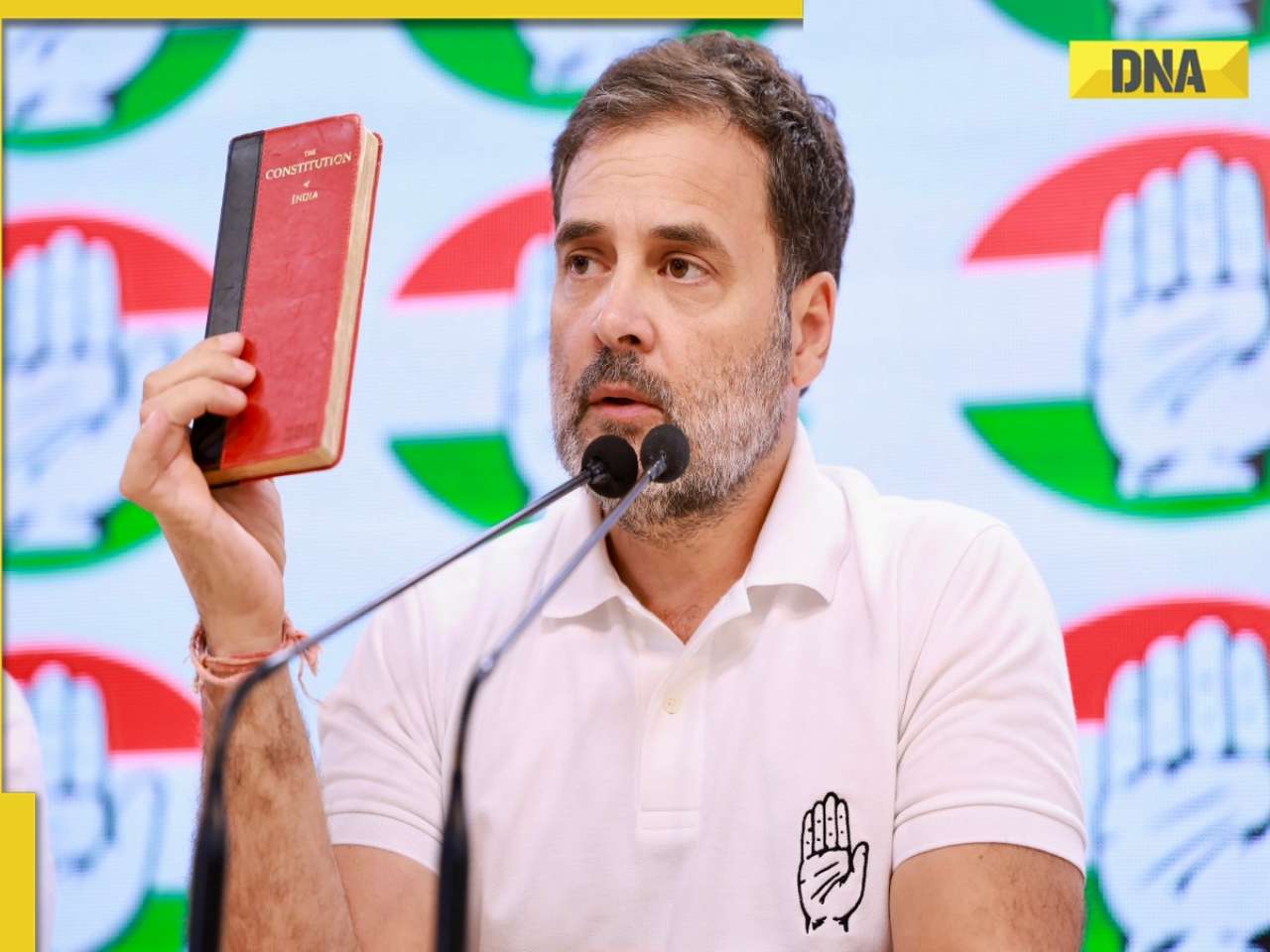The garden tomb’s beauty can make getting clicked in front of the Taj Mahal pale in comparison, finds DNA.
Though the Taj Mahal is one among the Seven Wonders of the World, few know of the inspiration behind the marvel. When Emperor Shah Jahan set out to build a monument for his beloved, he had his best-in-class architects study the design of the finest and celebrated monuments.
Out of this arduous exercise of analysing drawings at great length, emerged two designs that fascinated the emperor: Tomb of Mandu in Madhya Pradesh and Ibrahim Rauza in Bijapur. And eventually, the detailing, carvings and splendour of the latter made the cut.
Ibrahim Rauza, the garden tomb of Ibrahim Adil Shah II, was built in Bijapur in North Karnataka in 1626 AD, while construction of the Taj Mahal started in 1636 AD.
After personally seeing the Rauza, I realised anyone in the emperor’s shoes would have chosen this monument.
Truly underrated, Rauza’s beauty can make getting photographed in front of the Taj, pale in comparison. Its minarets, parapets, cupolas and cornices, with richly decorated walls and perforated stone windows, humble the style quotient of the visitor.
The word ‘Rauza’ literally means a garden. It is a square garden that consists of two buildings — on the left, a tomb containing the remains of Ibrahim Adil Shah and his wife and on the right, a mausoleum with a mosque and four minarets. Built on a single rock bed, this palatial structure is noted for the symmetry of its features.
Skirted by intricately sculpted gardens enclosed within an imposing wall, the entire structure lies above a basement that houses secret passages and living quarters for the cavalry. He chose iconic architect Malik Sandal for the task, whose grave lies within the courtyard, close to the sultan. Today, Bijapur has many polytechnic colleges, art and architecture institutes named after Malik.
It is said that most structures built by the Adil Shahi dynasty have a sense of mysticism about them. This place is also a shutterbug’s paradise. At sunset, as the birds fly back home over the Rauza, the aura amplifies.
Bijapur is a one-stop-shop for tourists. It has over 50 mosques, more than 20 tombs and a number of palaces, architecture that proliferated between the tenth and eleventh centuries.
In the words of renowned traveller and historian, Fergusson: “There is nothing in Hindustan comparable with the grandeur of conception of the Gol Gumbaz nor any so elaborately rich in ornamental detail as the buildings comprised in the Ibrahim Rauza. The tombs of Humayun and Akbar will not bear comparison with them. Some will be inclined to think that the Taj Mahal in Agra is superior but it is very difficult to compare the two.”
Ibrahim Rauza, referred to as the Black Taj, has impacted other monuments. Like the adage goes: “A heart in love with beauty never grows old.” Maybe that was the reason for Shah Jahan to pick Ibrahim Rauza over the Tomb of Mandu; he never wanted his love for Mumtaz, or his proposed creation, the Taj Mahal, to grow old.
![submenu-img]() Anushka Sharma returns to Mumbai amid rumours of moving to London; fans note Virat Kohli, Vamika, Akaay's absence
Anushka Sharma returns to Mumbai amid rumours of moving to London; fans note Virat Kohli, Vamika, Akaay's absence![submenu-img]() Big TROUBLE for ex-trainee IAS officer Puja Khedkar as Delhi Police accuse her of....
Big TROUBLE for ex-trainee IAS officer Puja Khedkar as Delhi Police accuse her of....![submenu-img]() Rahul Gandhi meets Olympians Vinesh Phogat, Bajrang Punia ahead of Haryana Assembly elections
Rahul Gandhi meets Olympians Vinesh Phogat, Bajrang Punia ahead of Haryana Assembly elections![submenu-img]() This superstar 'lost control' during intimate scene with 20-year-old actress, bit her, left her bleeding, in tears
This superstar 'lost control' during intimate scene with 20-year-old actress, bit her, left her bleeding, in tears![submenu-img]() Swine flu: What is H1N1 infection? Symptoms, protective measures to stay safe from influenza virus
Swine flu: What is H1N1 infection? Symptoms, protective measures to stay safe from influenza virus![submenu-img]() Paris Paralympics 2024: सचिन खिलारी ने पैरालंपिक्स 2024 में भारत को दिलाया 21वां मेडल, इस इवेंट में जीता सिल्वर
Paris Paralympics 2024: सचिन खिलारी ने पैरालंपिक्स 2024 में भारत को दिलाया 21वां मेडल, इस इवेंट में जीता सिल्वर![submenu-img]() J-K Assembly Elections 2024: बेरोजगारी से राज्य के दर्जे तक, Rahul Gandhi ने पहली ही रैली में छू ली जम्मू-कश्मीर की नब्ज
J-K Assembly Elections 2024: बेरोजगारी से राज्य के दर्जे तक, Rahul Gandhi ने पहली ही रैली में छू ली जम्मू-कश्मीर की नब्ज![submenu-img]() Bihar: केसी त्यागी का इस्तीफा, नीतीश और तेजस्वी की मुलाकात, क्या बिहार में हो रहा है कोई बड़ा खेल?
Bihar: केसी त्यागी का इस्तीफा, नीतीश और तेजस्वी की मुलाकात, क्या बिहार में हो रहा है कोई बड़ा खेल?![submenu-img]() 'गोरखपुर में चलेगा मेरा Bulldozer' सपा चीफ Akhilesh Yadav की धमकी पर Yogi Adityanath बोले- जिगरा चाहिए
'गोरखपुर में चलेगा मेरा Bulldozer' सपा चीफ Akhilesh Yadav की धमकी पर Yogi Adityanath बोले- जिगरा चाहिए![submenu-img]() 'सैलरी आने पर बुरा लगता है...', जानिए SC जज BV Nagarathna ने क्यों कही ये बात
'सैलरी आने पर बुरा लगता है...', जानिए SC जज BV Nagarathna ने क्यों कही ये बात![submenu-img]() DNA Auto Awards 2024: Citroen Basalt nominated for ‘CAR OF THE YEAR’; check price, features
DNA Auto Awards 2024: Citroen Basalt nominated for ‘CAR OF THE YEAR’; check price, features![submenu-img]() DNA Auto Awards 2024: Tata Curvv nominated for ‘CAR OF THE YEAR’; check price, features
DNA Auto Awards 2024: Tata Curvv nominated for ‘CAR OF THE YEAR’; check price, features![submenu-img]() DNA Auto Awards 2024: Mahindra Thar Roxx nominated for ‘CAR OF THE YEAR’; check price, features
DNA Auto Awards 2024: Mahindra Thar Roxx nominated for ‘CAR OF THE YEAR’; check price, features![submenu-img]() 2025 Aston Martin Vanquish revealed: Check expected price, features, top speed
2025 Aston Martin Vanquish revealed: Check expected price, features, top speed![submenu-img]() Jawa 42 FJ launched in India, rivals Royal Enfield Hunter 350: Check price, features, design
Jawa 42 FJ launched in India, rivals Royal Enfield Hunter 350: Check price, features, design![submenu-img]() Meet woman who quit high-paying job in abroad for UPSC exam, but failed to crack it thrice, took 3-year break and then…
Meet woman who quit high-paying job in abroad for UPSC exam, but failed to crack it thrice, took 3-year break and then…![submenu-img]() Meet man, who worked at Google with Rs 2 crore salary job, took retirement at 29 due to....
Meet man, who worked at Google with Rs 2 crore salary job, took retirement at 29 due to....![submenu-img]() Where is UPSC topper Tina Dabi's sister, IAS officer Ria Dabi?
Where is UPSC topper Tina Dabi's sister, IAS officer Ria Dabi?![submenu-img]() Meet IAS Vaishanvi Paul, know how one question helped her crack UPSC exam in...
Meet IAS Vaishanvi Paul, know how one question helped her crack UPSC exam in...![submenu-img]() Meet woman, who got inspired by IAS Tina Dabi, cleared UPSC exam in first attempt, became IPS officer with AIR...
Meet woman, who got inspired by IAS Tina Dabi, cleared UPSC exam in first attempt, became IPS officer with AIR...![submenu-img]() Giriraj Singh Attacked: Union Minister Giriraj Singh Assaulted In Begusarai, Bihar; Accused Arrested
Giriraj Singh Attacked: Union Minister Giriraj Singh Assaulted In Begusarai, Bihar; Accused Arrested![submenu-img]() Haryana Assembly Election 2024: Haryana Assembly Election Date Changed, Check Details Here
Haryana Assembly Election 2024: Haryana Assembly Election Date Changed, Check Details Here![submenu-img]() Vinesh Phogat Joins Farmers' Protest At Shambhu Border, Answers On Joining Politics | Congress | BJP
Vinesh Phogat Joins Farmers' Protest At Shambhu Border, Answers On Joining Politics | Congress | BJP![submenu-img]() Tripura Floods: 12 Killed, Over 300 Rescued As Heavy Rains Causes Severe Flooding In Tripura
Tripura Floods: 12 Killed, Over 300 Rescued As Heavy Rains Causes Severe Flooding In Tripura![submenu-img]() Kolkata Doctor Murder: Are Indian Rape Laws Enough? Public Opinion On Stricter Measures
Kolkata Doctor Murder: Are Indian Rape Laws Enough? Public Opinion On Stricter Measures![submenu-img]() Mukesh Ambani's superhit plan for Jio customers: 1.5 GB data for 30 days, unlimited calls for just...
Mukesh Ambani's superhit plan for Jio customers: 1.5 GB data for 30 days, unlimited calls for just...![submenu-img]() Mukesh Ambani's big move, set to challenge HDFC, SBI with...
Mukesh Ambani's big move, set to challenge HDFC, SBI with...![submenu-img]() Meet brothers, who built India's 4th largest pharma firm worth Rs 95876 crore, billionaires with net worth of...
Meet brothers, who built India's 4th largest pharma firm worth Rs 95876 crore, billionaires with net worth of...![submenu-img]() DNA Auto Awards 2024: Citroen Basalt nominated for ‘CAR OF THE YEAR’; check price, features
DNA Auto Awards 2024: Citroen Basalt nominated for ‘CAR OF THE YEAR’; check price, features![submenu-img]() DNA Auto Awards 2024: Tata Curvv nominated for ‘CAR OF THE YEAR’; check price, features
DNA Auto Awards 2024: Tata Curvv nominated for ‘CAR OF THE YEAR’; check price, features![submenu-img]() This star won National Award at 19, got stuck with bold roles; one controversy ended her career; now lives in poverty
This star won National Award at 19, got stuck with bold roles; one controversy ended her career; now lives in poverty![submenu-img]() India's most profitable film, made in Rs 25 lakh, earned 2000% profit, beat Sholay, Dangal, Baahubali, RRR; it is...
India's most profitable film, made in Rs 25 lakh, earned 2000% profit, beat Sholay, Dangal, Baahubali, RRR; it is...![submenu-img]() Two films had same story, characters; one became India's best film and other Bollywood's biggest flop, the reason is...
Two films had same story, characters; one became India's best film and other Bollywood's biggest flop, the reason is...![submenu-img]() Meet actor who slept on floors, shared room with 8 people, earned Rs 400, later gave Rs 1000 crore blockbuster
Meet actor who slept on floors, shared room with 8 people, earned Rs 400, later gave Rs 1000 crore blockbuster![submenu-img]() Six side-effects of momos you should know
Six side-effects of momos you should know![submenu-img]() Big TROUBLE for ex-trainee IAS officer Puja Khedkar as Delhi Police accuse her of....
Big TROUBLE for ex-trainee IAS officer Puja Khedkar as Delhi Police accuse her of....![submenu-img]() Rahul Gandhi meets Olympians Vinesh Phogat, Bajrang Punia ahead of Haryana Assembly elections
Rahul Gandhi meets Olympians Vinesh Phogat, Bajrang Punia ahead of Haryana Assembly elections![submenu-img]() 'Would have never collapsed if...': Nitin Gadkari said on Shivaji Maharaj statue collapse
'Would have never collapsed if...': Nitin Gadkari said on Shivaji Maharaj statue collapse![submenu-img]() SEBI officials complain to Finance Ministry of 'toxic' work culture: Report
SEBI officials complain to Finance Ministry of 'toxic' work culture: Report![submenu-img]() Rahul Gandhi to visit J-K today, to sound poll bugle with two mega rallies ahead of assembly polls
Rahul Gandhi to visit J-K today, to sound poll bugle with two mega rallies ahead of assembly polls 











































)
)
)
)
)
)
)
)
)
)
)
)
)
)





)
)
)
)
)
)